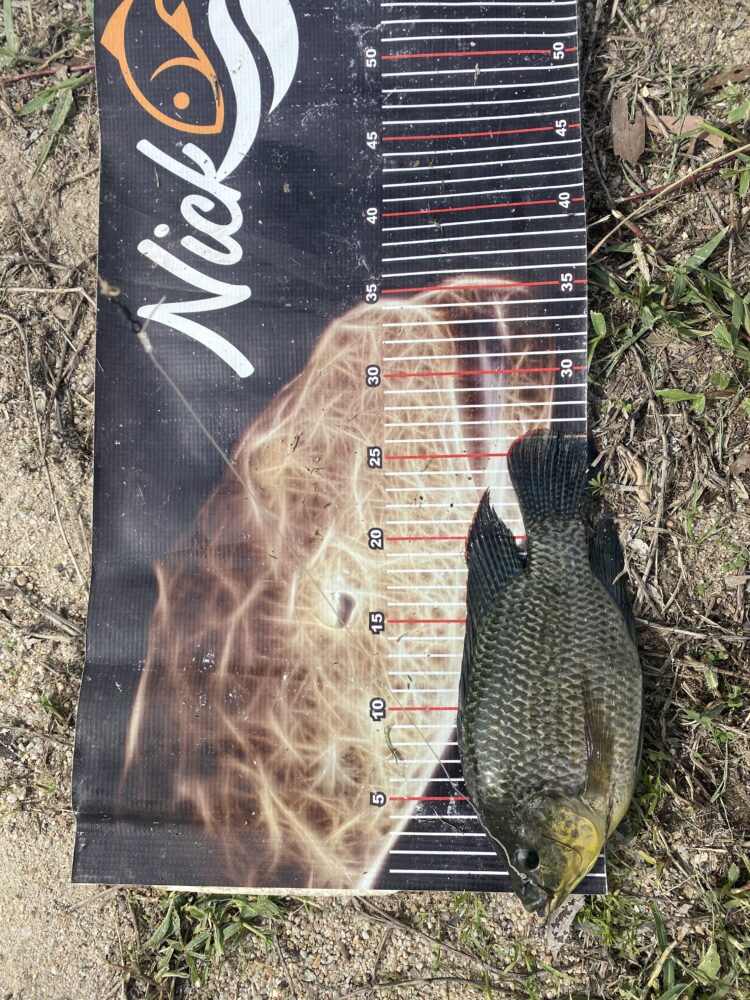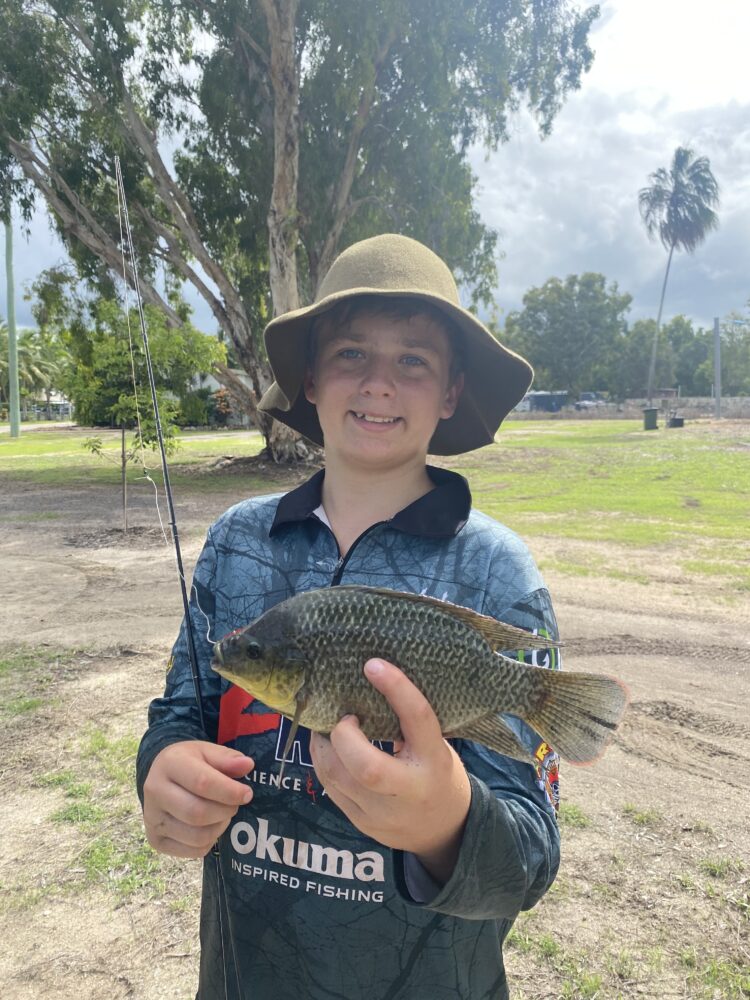Tilapia Termination – By Nick Thompson
Tilapia are desolating our waterways. But how did they get here, what do they do and how can we stop from spreading further?
There are a number of tilapia species; the one that is in Australia is the Mozambique tilapia. These fish are deep bodied with a slimmer profile and the males will have large lips and mouths similar to those of a red throat. They are often olive or silvery gray and sometimes have blue scales along the back in the water (colors depending on the water clarity and quality). A tilapia’s fins are quite different from many native fish like Australian bass and barramundi which will have an indent on their dorsal fish and a rounded end, whereas tilapia have a continuous fin and an extended end. This is the same as the pelvic (stomach) fins, on a tilapia they are quite long and nearly touch the anal fins where as native fish are short (on most fish).
But how did these fish get to Australia and how did they spread so quickly? Tilapia are native to Africa and were brought into Australia in the 1970s as an aquarium fish, and somehow they have made their way throughout Queensland.
Tilapia are considered to be one the greatest threats to our native waterways.
Tilapia are very resilient fish, making it easy for them to invade the water ways. They can survive out of water for long periods of time, but what makes them so invasive is their breeding habits. Tilapia will make a nest and by doing this they rip apart the vegetation on the bottom which lowers the oxygen levels and creates less structure for many smaller fish and crustaceans, which means less hiding places and larger fish including the tilapia will destroy them into oblivion. The females have the ability to carry their fertilized eggs in their mouth. Now the problem with this is that if something were to happen to the mother, like being caught or being eaten by a predator, she will drop the eggs and they will still hatch. Another thing this fish can do is mature early and grow to small sizes; this is known as stunting. This means that in times of poor water conditions or overcrowding they will only grow to smaller sizes so that the population number stays at a good level (for the tilapia population). So this allows them to spread to substantial numbers and a lot of our native fish can’t handle this.
Now, tilapia are in nearly every water way so there are a number of spots to catch them where fish are plentiful. The easiest way to find tilapia is to look for signs, literally if a tilapia is spotted in the system, warning signs will be posted on the public boat ramps. So if the signs are there so are the tilapia. Now, this doesn’t mean they’ve been spotted in every pond or river, so there are two more ways to find them. The first way is to look for nests, a tilapia nest will look like a circle or weedless bottom, almost like a weed. Often you will be able to see the larger parents in or around the nest, when they’re doing this they are very aggressive and will hit a lure, this is a reaction bite as they only attack other fish when they enter the nest to protect the juvenile fish inside. You can also find them by simply looking, you will often be able to see tilapia cruising just below the surface. This is especially common in ponds where people will come down to feed ducks and the tilapia have learnt that that is a free feed. So once you’ve found a spot with tilapia in it you need to trick it into eating which can be tricky. Tilapia are mainly vegetarian meaning it’s not like fishing for perch and other predatory species where you would use prawns and worms as it won’t appeal to them. Depending on who asks they’ll all say a different bait to use but there are three main ones that people will agree upon. Peas, corn, and bread. Bread is only really effective where people throw bread to feed the ducks and other water birds, whereas peas and corn are better in places like small creeks and rivers. There are two rigs that I use for tilapia and both are very simple.
The first one I use is just a simple weightless hook, I will tend to use a small circle hook, around 2/0 size, a similar hook I use for whiting fishing. I will normally have a swivel rather than an FG knot, the only reason for this is so it adds a little weight to aid in casting a little further. The other rig I use for tilapia is basically the same as the last one except I will add a small float, this is especially good for younger kids so they can see the hits a lot easier and it’s easier to get a good hook. Other than the float, the rig is pretty much the same. I will also run a very light leader for tilapia because they have no teeth and they can be picky so I like to run a 8lb mono leader. Any set up is fine for these fish, you don’t need a super expensive set up, just something that can cast fairly light rigs and catch a fish. And that’s one good thing about tilapia. There is a good way to get kids into fishing and you don’t need a $800 set up to catch them.
Tilapia are a real pest and we must do whatever we can to get them out of our systems. If you do catch one it is very important you don’t keep, eat, sell and especially don’t release them.
It is illegal to do so. The best thing to do is put them in a bin or bury them well away from the water in case of flood and eggs getting released.
If you’re after more info on these fish, then head across to the Department of Agriculture and Fisheries website.








